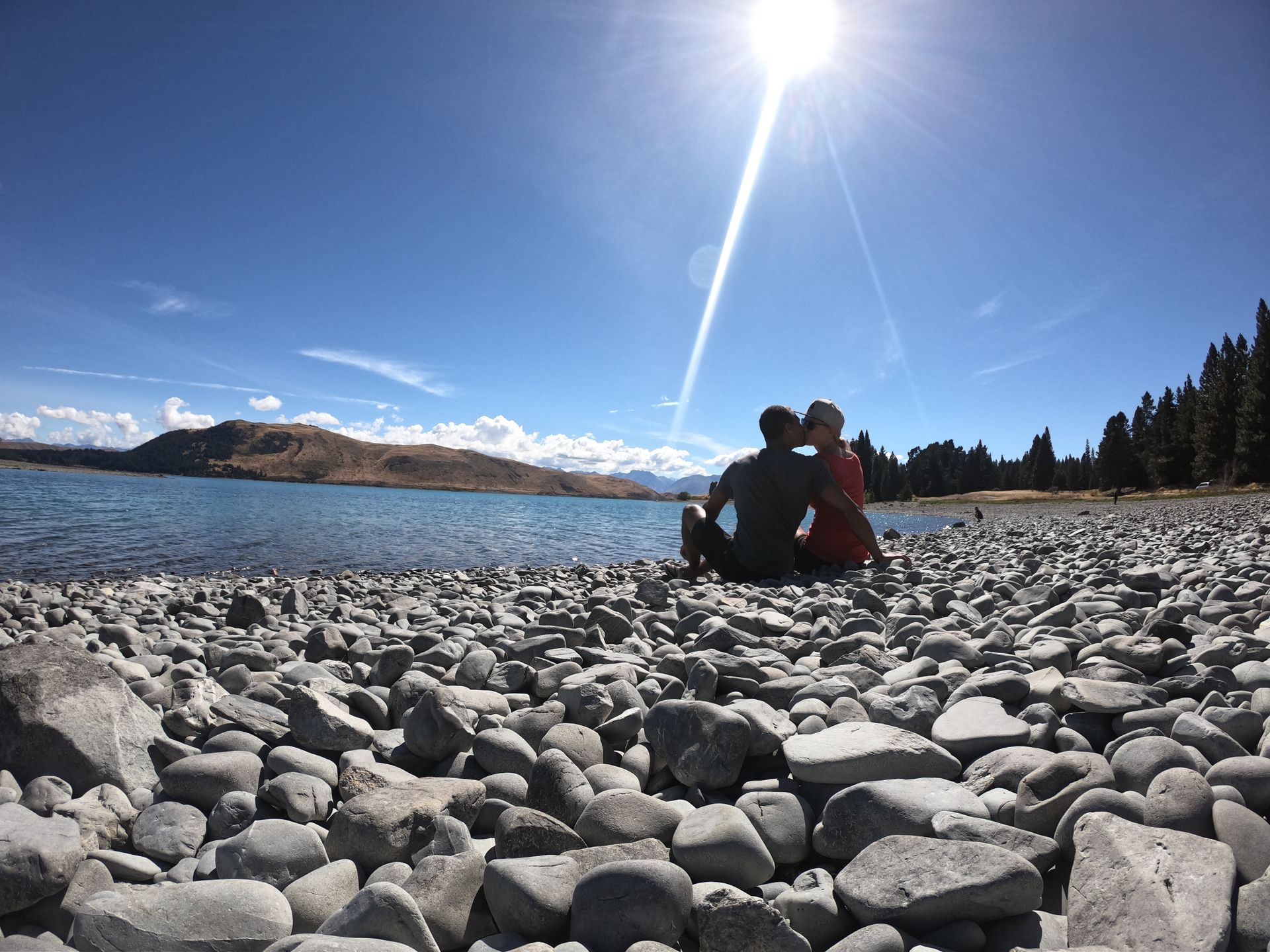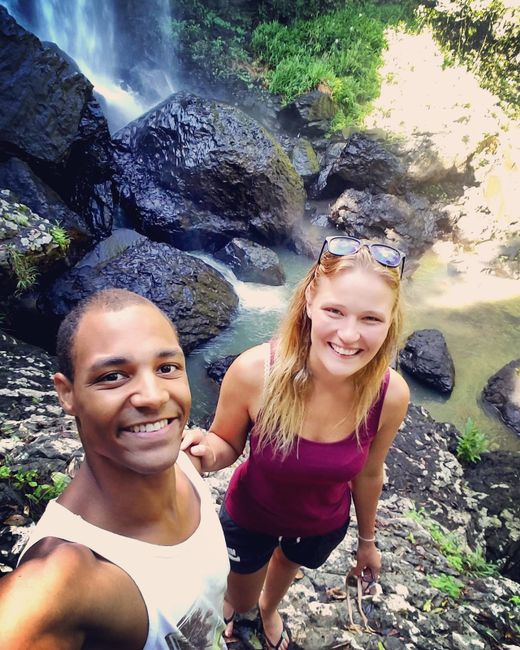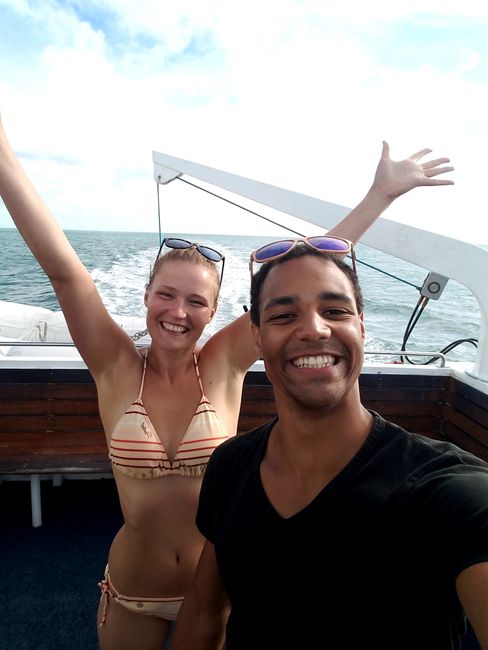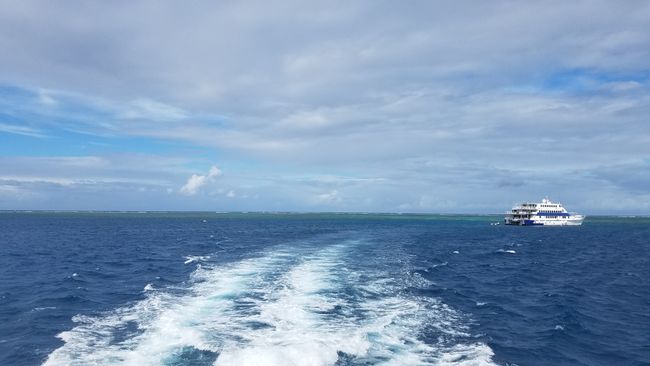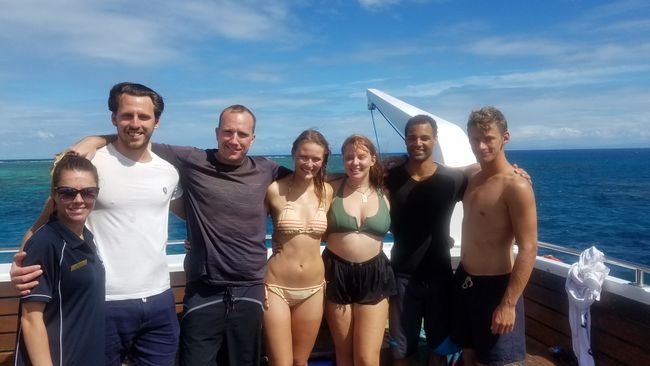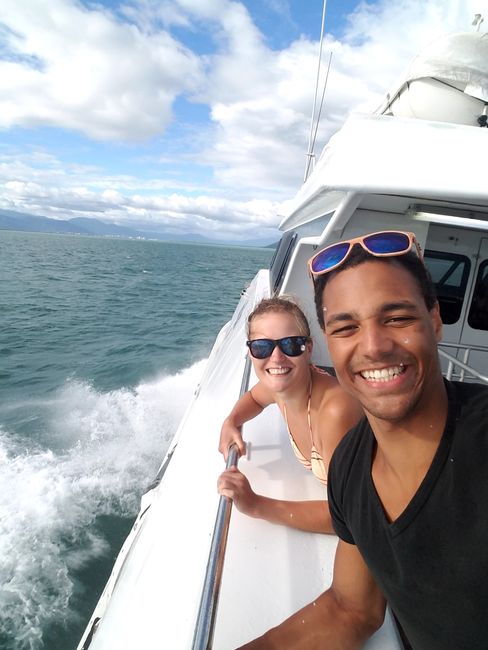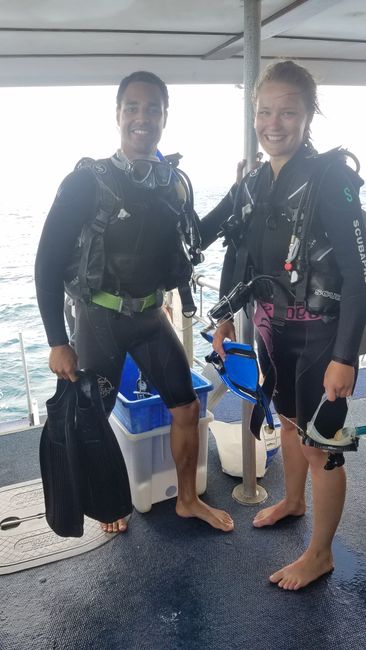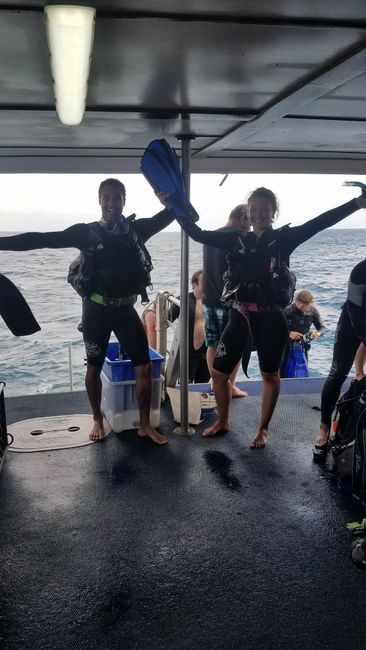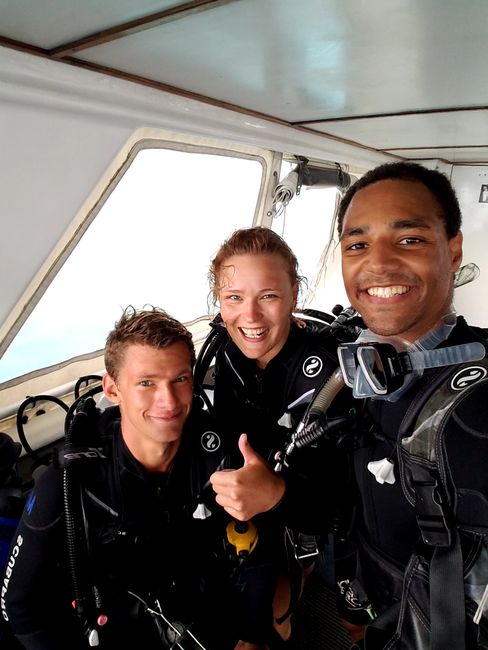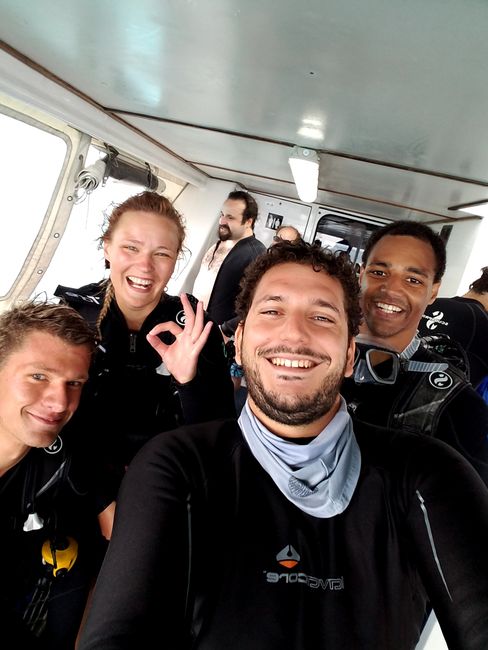Krissi and Kenny diving - diving license in the Great Barrier Reef
প্ৰকাশিত: 02.05.2018
নিউজলেটাৰ চাবস্ক্ৰাইব কৰক
On Sunday morning at 9.00 am, the first day of our diving school at Deep Sea Divers Den started. After a short registration, we waited for our other three group members: Alexandra from England, Tim from the USA, and Justin from Belgium. We were taught by Mel, a New Zealander. But before the class could begin, we had to fill out numerous forms, on which, for example, weight, waist circumference, and health conditions were documented.

Until about 1.00 pm, we learned the first theoretical contents. In videos, everything was explained to us first, while we answered some appropriate questions and then finally answered a quiz with 10 questions for each chapter, of which we had to answer at least 8 correctly. The fact that the course was in English was mostly not a problem. If we didn't understand something, we could help each other or Mel would explain the term to us.
After lunch, we learned how to prepare and put on our equipment. Then we went straight to the pool for the first training. We learned to breathe underwater, never hold our breath, inflate our vest to the right extent so as not to sink or float on the water surface all the time. Furthermore, we had to fill our diving mask with half full of water underwater and then empty it again. We also learned how to behave if we lose our regulator (breathing apparatus) underwater or if we run out of air underwater and have to use our buddy's air. When diving, you are always with at least one other person, yourself and your buddy.
Monday also started at 09.00 am at the diving school. On this day, however, we first went to the pool. We learned, among other things, to hover in the water without moving, how to take off and put on our vest and weight belt underwater, how to bring back a tired buddy to the boat, and also different ways to surface in case of emergency. In the afternoon, we learned the last two theory chapters, each with a questionnaire and quiz. The most important thing: we had to pass a theory final exam at the end. There were 50 questions to answer, of which we had to answer at least 37 correctly. We both passed with 47 correct answers. But we were not certified divers yet.

On Monday, we started at the school at 7.30 am. We were driven to the boat with shuttles. Another 'student' joined us on this day - Luc from Switzerland. On this day, we were going to experience two wonderful dives in the Great Barrier Reef, specifically Norman Reef, which is about 11m deep. The two dives lasted almost 40 minutes. We saw many different fish of all sizes and colors, including clownfish (Nemo), parrotfish, pufferfish, and giant sea cucumbers. The reef itself also offered many fascinating shapes and colors. Throughout our dive, a relatively large butterflyfish accompanied us and swam fearlessly through the whole group. According to Mel, he was hoping we would have food for him. There are also many large fish swimming along the boat, waiting for food. Before returning to the boat, we observed them while snorkeling. Suddenly, all the fish went crazy, even jumping out of the water, brushing against us, and one fish even jumped towards Krissi with its mouth open. After the initial shock and a glance at the boat, we saw that the crew was having fun throwing food into the water and causing the chaos.
Our team members also saw a shark, but at that time we were both engaged in an exercise - breathing through the other person's regulator on the seabed. We also practiced losing our masks or surfacing in an emergency. In the sea, we also applied the Safety Stop for the first time. After a dive, you must wait at least 3 minutes at a depth of 5 meters before surfacing, so that the body has enough time to eliminate the nitrogen accumulated during the previous dive. If you surface too quickly at this point, the nitrogen can accumulate as bubbles in the body and cause decompression sickness. This disrupts blood circulation, causes severe limb pain, or in rare cases can even be fatal.
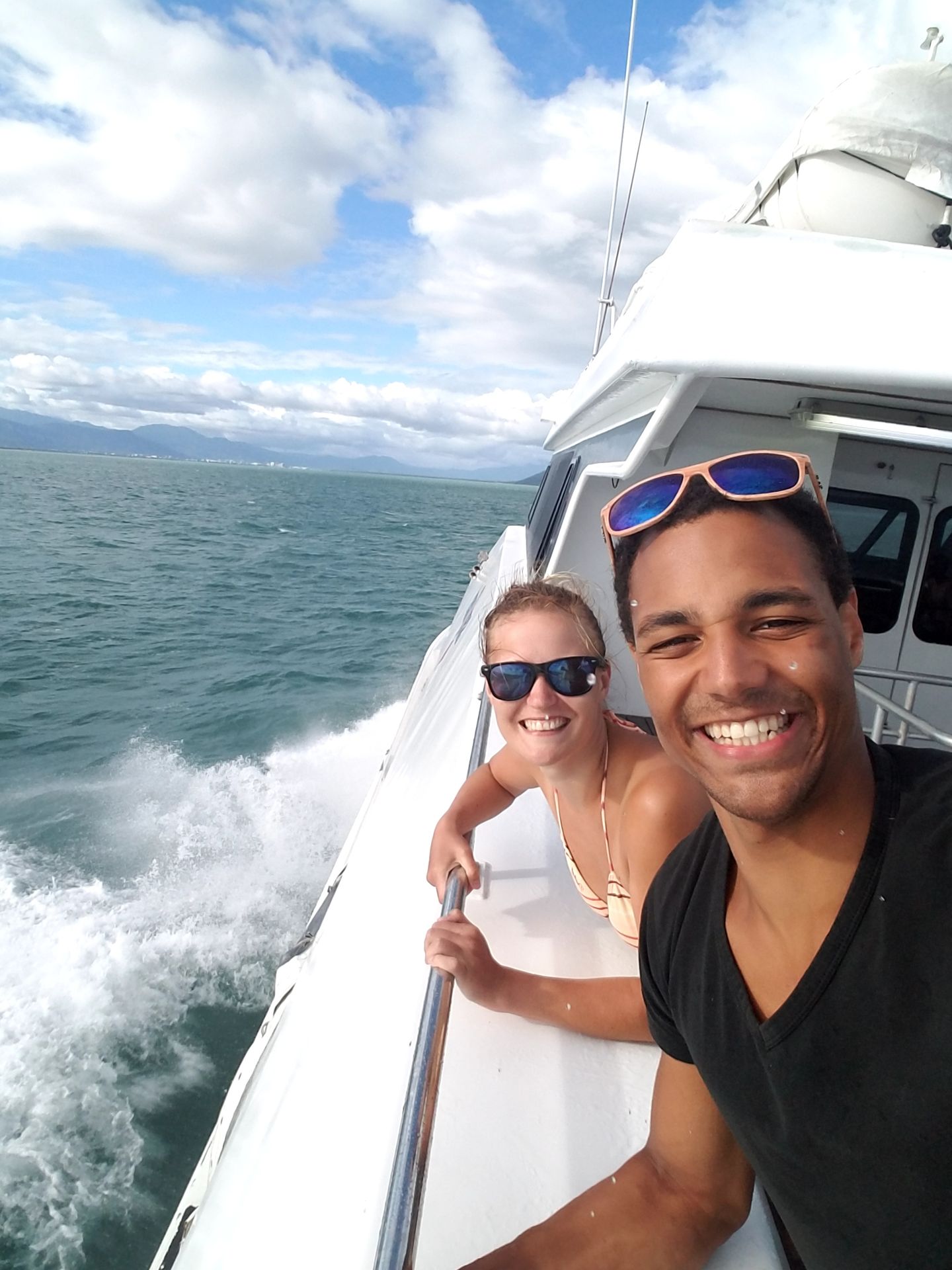
Thanks to motion sickness tablets, we coped well with the boat rides. On board, we were greeted in the morning with coffee/tea and small muffins. For lunch, there was a small buffet with chicken wings, pasta salad, and more.
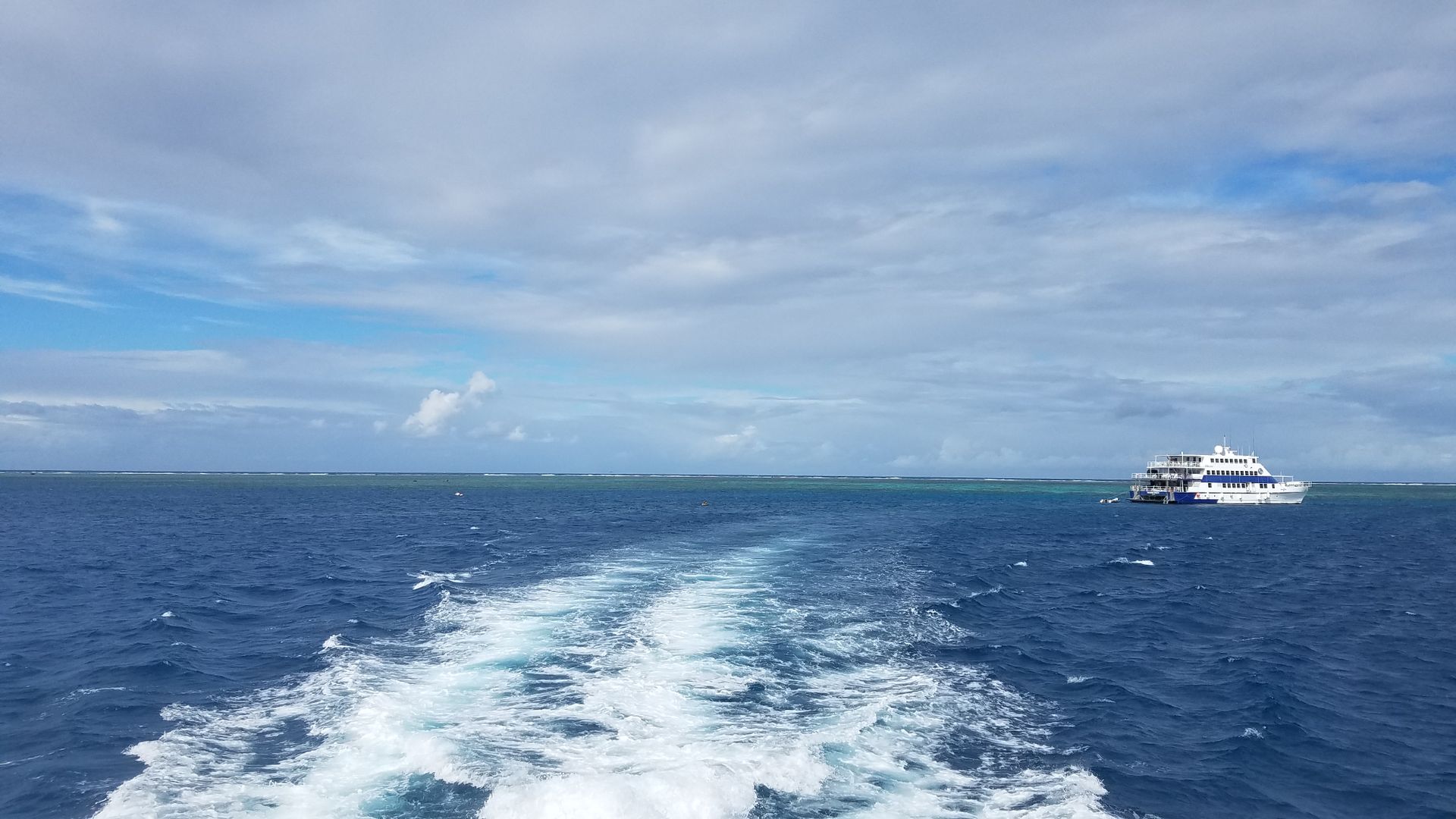
On Wednesday, the big day of the exam had come. In the morning, there were two dives of about 25 minutes each. In the first one, we repeated some skills with our instructor Arthur and learned how to navigate underwater with the compass. We dived to a depth of 17m. Finally, we also saw reef sharks, even three times. However, Arthur was not sure if they were two or three different sharks. A huge Maori wrasse also impressed us.
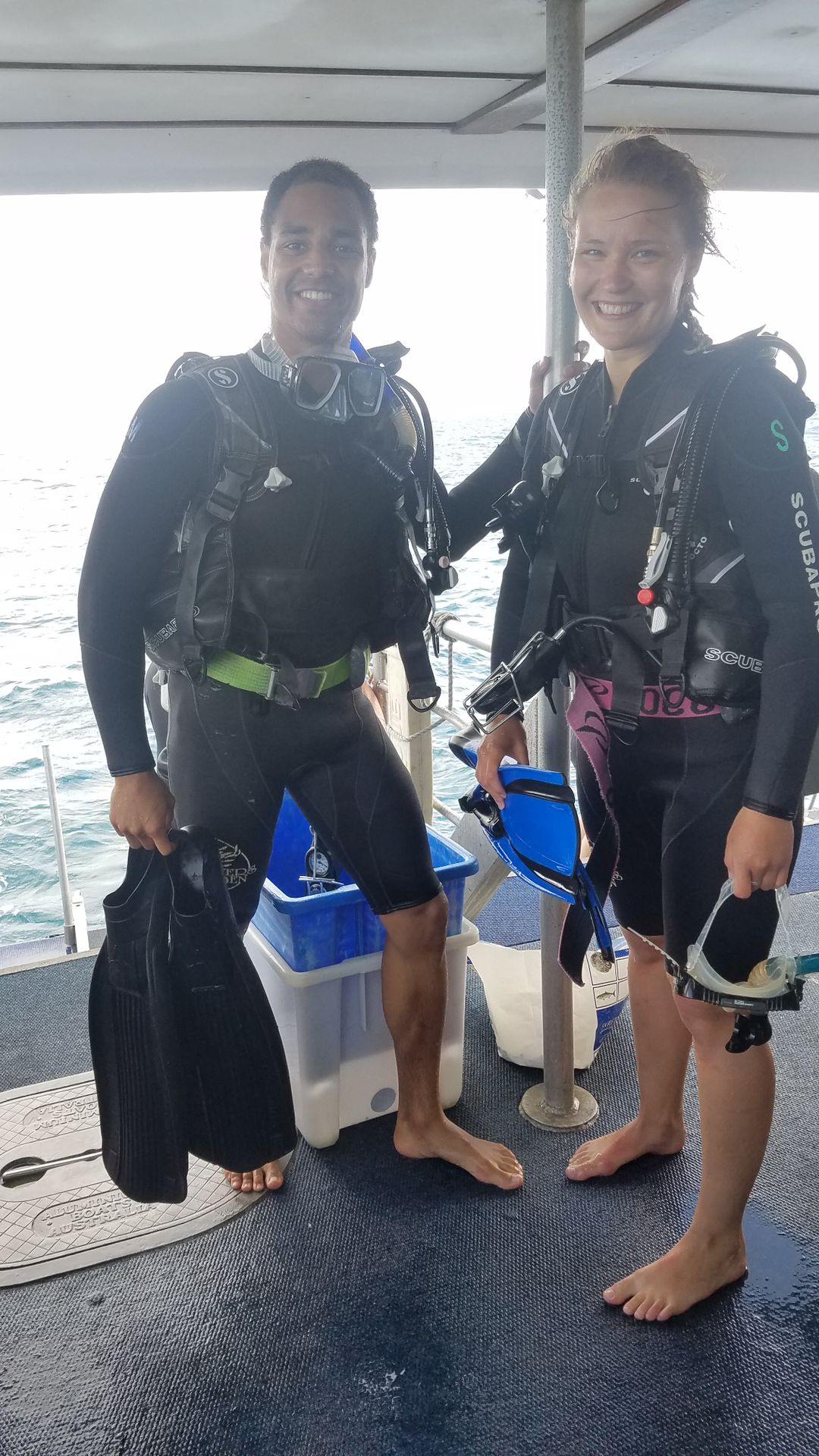
In the second dive, Arthur was just a silent companion - that was our exam dive. Kenny kept an eye on the route, Krissi checked that we had enough air in the tanks and that we turned back at 140 bar at the latest, to have enough air for the return trip. When starting the Safty Checks, you should still have at least 70 bar of air, and with 50 bar, you should be back on the water surface. Luc monitored how deep we were. We were allowed to dive a maximum of 17.9m deep, otherwise we would not have passed, as our diving license only entitles us to dive to a depth of 18m. However, we only dived to a depth of 14m. Back on the ship, Arthur announced that we passed and now have the PADI diving license 'Open Water Diver'. Now we can dive as a pair without an instructor. :)

We could test this directly during our third dive on that day. The three of us explored the reef together. Unfortunately, we got a little lost, but luckily we still found the right way back. In this dive, we were able to see another reef shark. However, Krissi's air ran out very quickly, so we had to do the Safety Stop before returning to the boat and had to snorkel the rest of the way back to the boat, but fortunately, it wasn't far anymore.
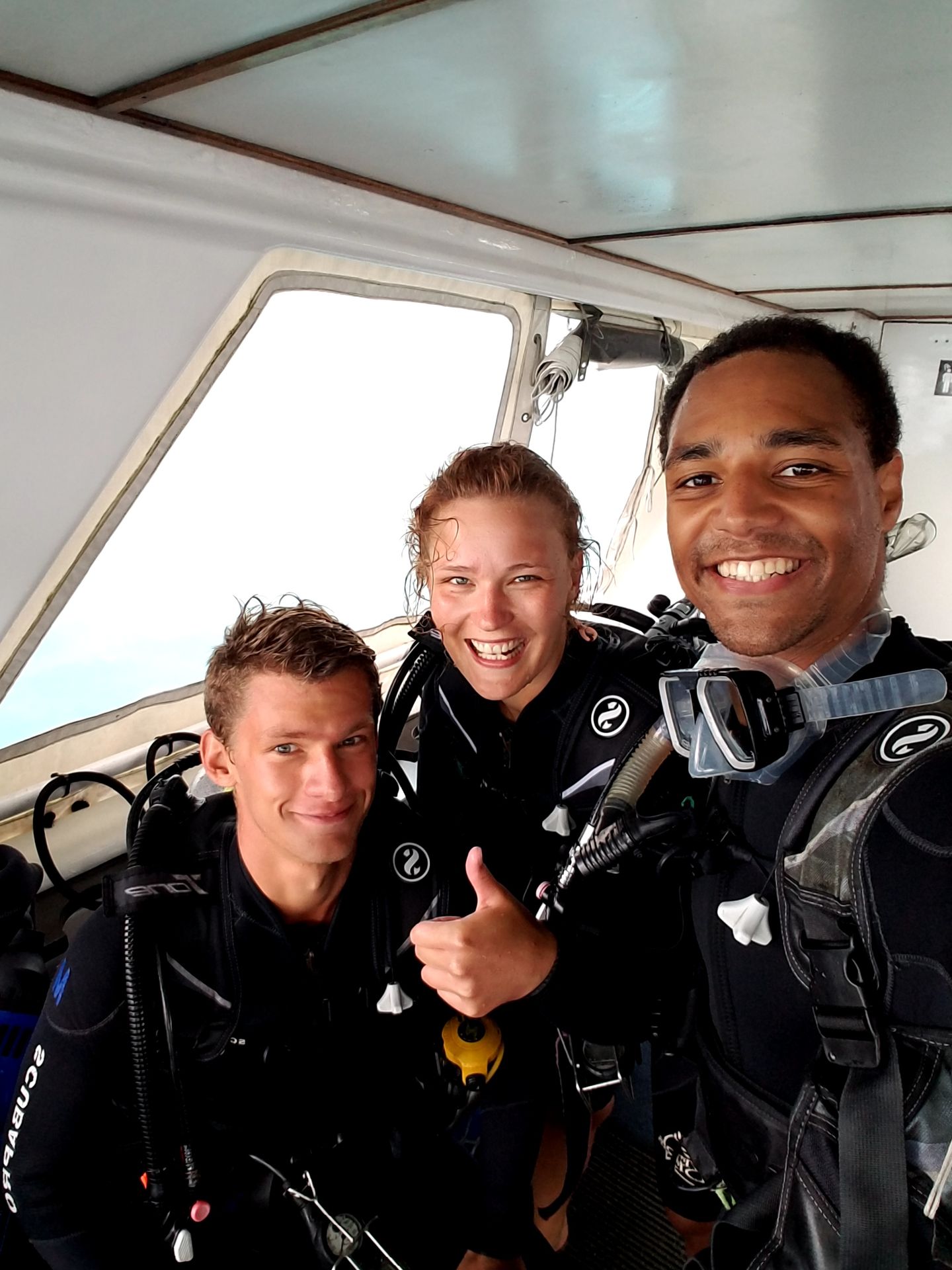
We were really fascinated by diving, and we were glad that we didn't book a snorkeling excursion with the rough waves, where you constantly have to struggle with saltwater. Floating in the water and swimming with the fish (which hardly pay attention to you or fear you) gives you the feeling of being part of another beautiful world. The tranquility and harmony in the water are almost meditative. The Great Barrier Reef was definitely a great place to learn diving. We are excited to see when we can dive again and are already looking forward to it.
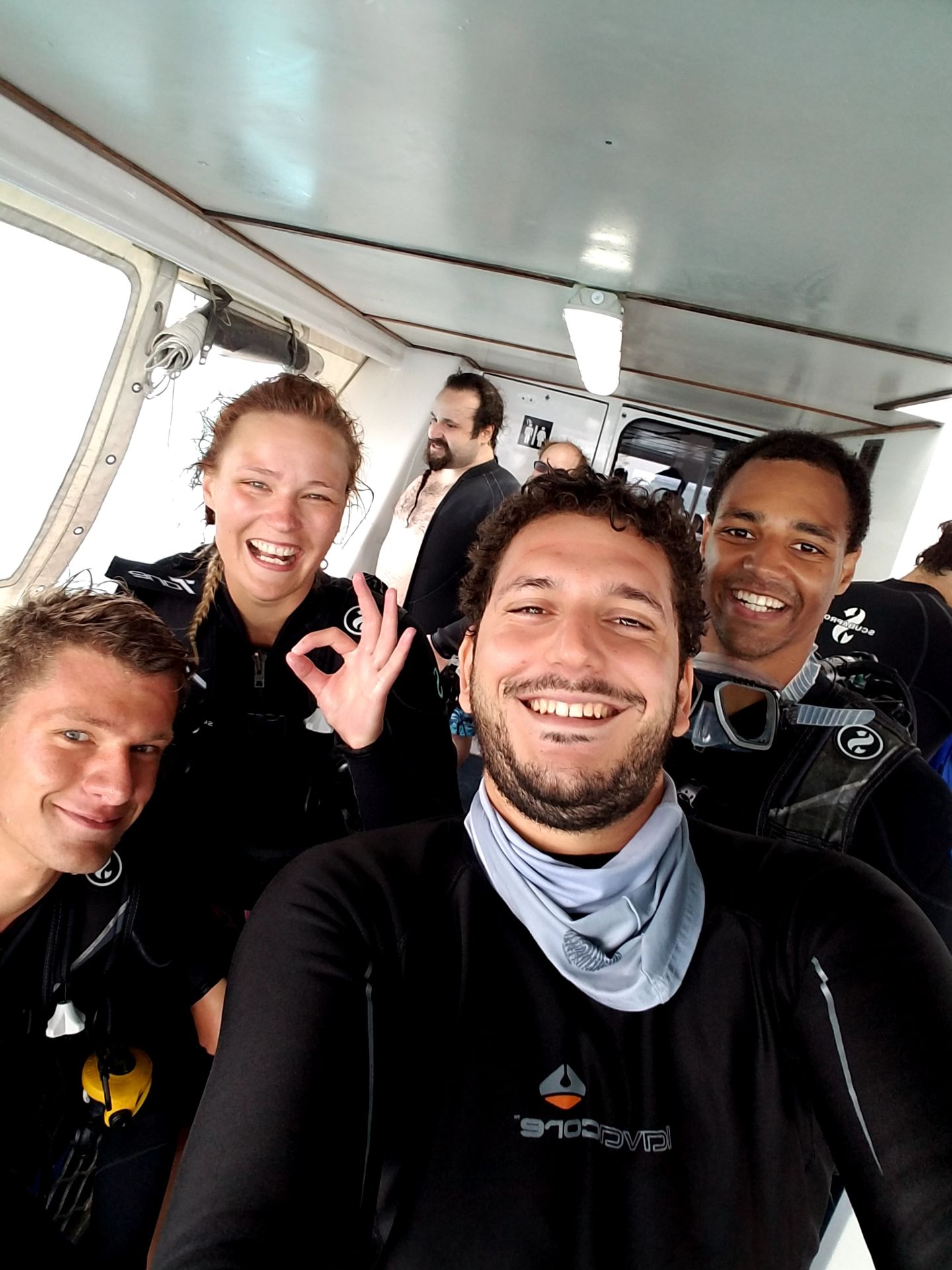
নিউজলেটাৰ চাবস্ক্ৰাইব কৰক
উত্তৰ
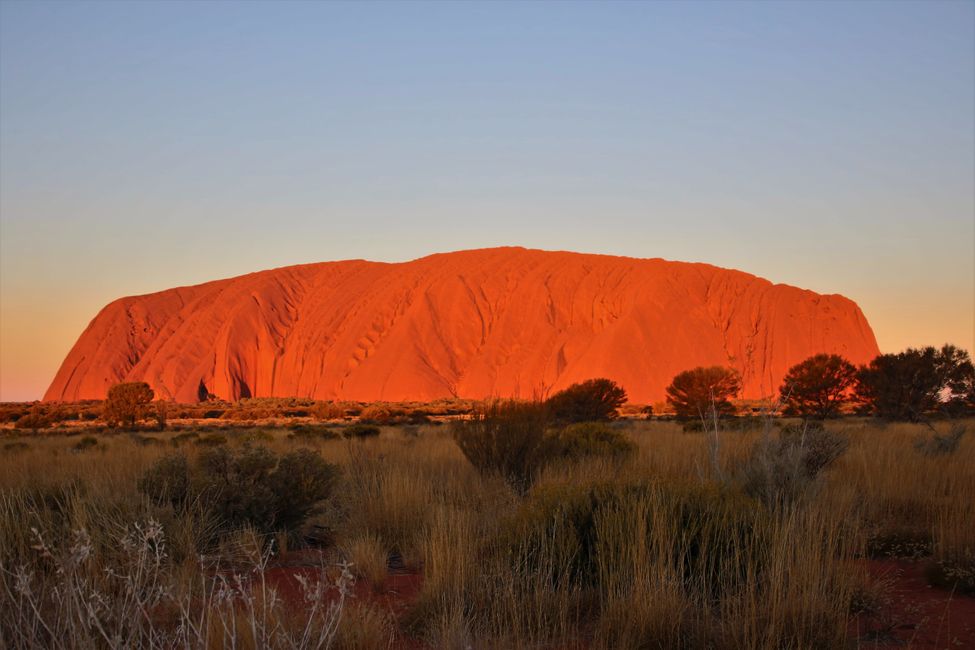
ভ্ৰমণৰ প্ৰতিবেদন অষ্ট্ৰেলিয়া
